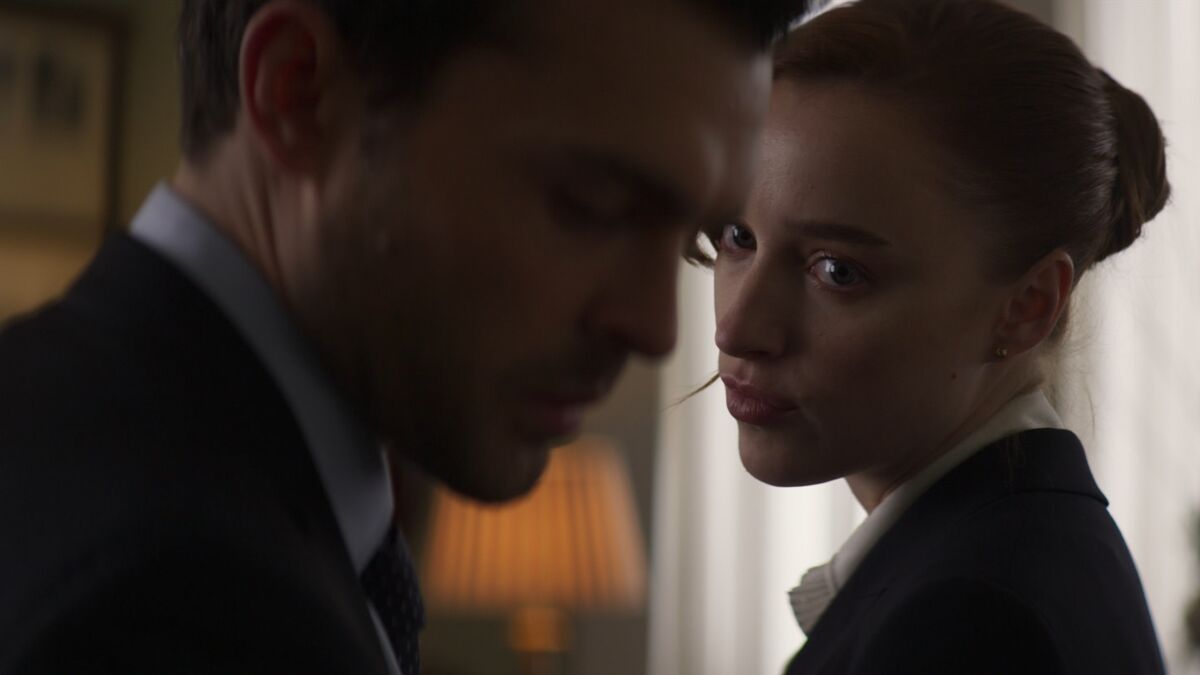For veteran Sundance fans, returning to the festival for the first time since January 2020 can feel like half comfort, half disorientation of a familiar ritual. Aside from the occasional masked face peeking out from the usual hoodie-and-beanie ensemble, you might be almost certain that nothing has really changed, that the three-year pandemic blip never really happened. After all, we are, as usual, lined up in the crowded lobby of the Eccles Theater, the 1,269-seat high school auditorium that serves as the festival’s largest venue. Then go back and head down Main Street for a midnight movie at the Egyptian Theater. An Australian mom-loving freakout called ‘Run Rabbit Run’?
That movie, which initially delivers an effective scare streak before devolving into “Run Rabbit Run Rinse Repeat,” may not have been a return to “Hereditary.” But nonetheless, it was nice to see it in a packed Park City home. Shortly before “Run Rabbit Run’s” premiered Thursday night, a programmer announced that the film had been acquired by Netflix. That means you can watch it right from the comfort of your own home, but you can also skip ahead or turn it off if it feels too scary, derivative, or boring.

Sarah Snook in the movie “Run Rabbit Run”.
(Sarah Enticknapp/Sundance Institute)
Of course, that’s the prerogative of streaming addicts, and god knows Netflix is releasing more than skippable shares. If it shows us anything, it’s that even movies you may have wanted to fast forward at home or avoid in the first place can be more complicated. It doesn’t go away when it hits the big screen in front of an enthusiastic crowd. Strong films like “Fair Play” and “Magazine Dreams” were the fuel for the festival’s dramatic U.S. competition on Friday afternoon, even in the face of the film industry’s tough economic times. may also convince you of potential breakout potential. I was struck by the recent news that Regal Cinemas has spread across the United States, with six of them shutting down in Southern California.
But that’s enough existential doom and gloom for now. to see the signs. And such signs abounded in “Fairplay,” the wicked and sharp psychological thriller that marks writer-director Chloe Demont’s frighteningly sure feature debut. It tells the story of Emily and Luke (Phoebe Dynevar and Alden Ehrenreich, both brilliant), two ambitious analysts at the same Manhattan hedge fund. They’re also secretly a couple — company policy violations are further complicated when Emily gets the major promotion she thought was going to Luke.
Why they assumed such a thing from the beginning is a mystery that Domont spends the rest of this film pondering, and if the answer is fairly obvious, the common white male ego. vulnerabilities, especially the prevalence of misogyny in financial bros. Nimble between her protagonist’s perspectives while making it clear enough where her sympathies lie, Domont turns a couple’s bedroom and a corporate boardroom into a brutally complementary war zone. It also packs memorable supporting characters into the film, including the great Eddie Marsan as the Reptilian CEO and Rich Sommer as a far more menacing version of the pudgy Adman he played in “Mad Men.”
That series is a remarkably keen grasp of the early days of corporate sexism, but it’s not the only one that might come to mind when you’re watching “Fair Play.” The 2008 Financial Crisis It even reminded me of Margin Call, an elegant, chill drama about Wall Street on the eve of In a few others, my mind reverted to “promising young women,” but in these eyes Domont’s fearless consideration of male violence and female calculation is both literal and metaphorical. also draws much more blood. Having seen it for the first time here in Park City, is it possible that both films came to mind? One of the joys of attending festivals regularly is remembering not only (some of) the movies you’ve seen, but when and where you saw them. If you’re lucky, you might remember the charge they sent into the crowd, the sensation of an exciting discovery almost all at once.

Alden Ehrenreich and Phoebe Dyneever in Chloe Demont’s ‘Fair Play’, an official selection of the 2023 Sundance Film Festival.
(Sundance Institute)
“Fair Play” delivers that charge, and “Magazine Dreams,” a brutal study of physical extremity and psychological meltdowns built around Jonathan Majors’ utterly astonishing lead performance, is extremely It gave a pungent and slower burning effect. During his 124 minutes of patient observation, Majors is completely inhabited by Killian’s ripped abs, swollen arms, and bruised soul of a bodybuilder named Maddox. He hopes the name will one day become famous. After years of relentlessly pumping iron, hitting 6,000 calories a day, and injecting steroids, you might finally land on the covers of men’s fitness magazines across America. As shot in a flashy, hypnotic long take of a fat male body posing strutting under the lights of the city, the trauma, poverty, and largely uncoordinated anger that define Killian’s existence. It’s a dream to face and fly defiantly.
Iterations of “Killian Maddox” feature the first four letters spelled “kill” and the fact that filmmaker Elijah Bynum apparently named an anti-sociopath antihero with another haunting name: Travis. It has an unnerving effect on the audience because it clearly wants them to think about Bickle. A classic American filmmakers never tire of referencing, the calls to “Taxi Driver” are numerous, and evident from the ill-advised advice Killian goes with his sweet colleague (Haley Bennett) to the ritualistic point. . to the disturbing spectacle of him purchasing and assembling firearms. That sequence and others that dared me to see word bubbles like “mass shooting” and “confused incel” floating around Killian knotted my own undefined stomach muscles .
But Bynum also makes a provocative inquiry into Killian’s violent abilities in his storytelling tense operatic novel. I’m back from the brink. This kind of bait and switch can wear you down over the course of the film’s long, two-hour-plus progression, but it’s also rooted in legitimate problems. How much truth can be gleaned from Killian’s own oft-implied criminal record, especially given the overly aggressive police he’s been subjected to? Does he pose more or less of a threat to society than the racist white man who beat him?
In these moments, Killian’s body, which is both Majors’ body and indivisible and indivisible, becomes both a hypnotic visual spectacle and a sort of vessel for discussion, the fear that by default haunts black men in America. and absorb assumptions. These assumptions will certainly continue to be debated – I suspect Major’s performance brilliance is not – that this ferocious, darkly amusing, agonizingly dark vision will pass through Park City and hopefully its Because we are moving forward.

